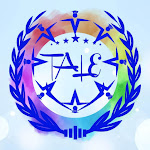Reading and Comprehension Exercise:
Introduction:
The term ‘reading’ is used in different ways by
different people to mean different things. If we think of reading as a process,
we will have at least three categories of words that define reading:
a) Articulate, pronounce, speak, enunciate etc.
b) Decode, identify, decipher etc.
c) Comprehend, interpret, making sense, searching
meaning etc.
For most of us, reading
seems to be a simple task. But in reality, it is a complex skill involving a
number of simultaneous operations – both physical and mental. There are many
definitions of reading. Reading is when someone looks into a written text and
starts to absorb the information from the written linguistic message.
So from the above we
can sum up by saying that reading is a psycho-linguistic guessing game. Actually
reading is the process of receiving and interpreting information encoded in
language form via the medium of print.
Although many children
can read, reading and reading comprehension are two different things. While
reading involves translating and decoding text into sounds and spoken words,
reading comprehension involves taking what was just read and deriving meaning
from those words. In simpler terms, reading comprehension is the ability to
read, understand, process, and recall what was just read.
Objectives:
Reading comprehension aims at developing the students' reading and
comprehension skills and strategies , such as
previewing, scanning, inferring, asking questions, skimming, , etc. through further training the students
in the four basic skills of understanding, speaking, reading and writing.
It aims at introducing
the students to the world of ideas and concepts making them use and develop
their background knowledge about the different topics discussed. The students
will become familiar with different writing styles and different text genres
and will be introduced to new vocabulary items in context, new grammatical
structures and idiomatic expressions. It is also helpful in developing the students'
analyzing , paraphrasing,
summarizing, and writing skills
through analyzing the meaning of passages, summarizing them and writing précis
on them, which ultimately lead to improving their English language and fluency
in reading , speaking and writing.
Methodology:
Meaning:
We define reading comprehension as the process of simultaneously extracting and
constructing meaning through interaction and involvement with written language.
We use the words extracting and constructing to emphasize both the importance
and the insufficiency of the text as a determinant of reading comprehension.
Comprehension entails three elements:
• The reader who is doing the comprehending
• The text that is to
be comprehended
• The activity in which
comprehension is a part
Types:
There are many kinds of comprehension exercises; Questions may be classified
according to their forms. There are
i) Fixed Response
items, and ii) Free Response items.
1. Multiple-choice
questions: These consist of a stem which poses the problem followed by four or
five options, one of which is the correct answer.
2. TRUE OR FALSE: For
these questions, students have to identify whether a given statement is
entirely true or if a false detail is given. The students are to provide
evidence to prove why the statement is true (by finding the original sentence)
or false (by finding the false detail). Find that detail and write the answer
in a way that matches (if true) or contrasts (if false) with the statement.
3. SEQUENCING: This
type of question requires students to figure out the order in which events
happened in a story. However, this question is not asking which event APPEARED
first. An event that appeared in the first paragraph may not have happened
first.
4. CAUSE AND EFFECT:
These questions are asking the students to identify the cause (what made
something happen) and effects (what happened as a result of the cause). A
useful tip is to write “because” on top of the Cause column and “so” in the
effect column. When the two are strung together, it helps them to understand
the question requirement more clearly.
5. FACTUAL: The most
straightforward type of question. Such questions focus on obvious details from
the passage. The students are required to simply find these obvious details to
answer BUT they have to be careful not to lift and take only what is necessary.
6. INFERENCE: These
questions are less direct compared to factual questions. They require the
students to think like detectives and look for clues instead of obvious answers
in the text. For instance, looking at the phrase “the sun was directly above
their heads”, the student should be able to deduce that it was noon time.
7. VOCABULARY IN
CONTEXT: These questions are basically testing the students’ vocabulary.
However, do not forget that many words have multiple meanings. Identify the
correct usage of the words based on the way they are used in the passage
(that’s why it’s called “in context”).
Activity (selected
area):
Activity
name | Reading
and Comprehension Exercises |
Class |
|
Name
of the age-group |
|
Name
of the school |
|
Write down the text passage and
arrange comprehension exercises |
Significance: In
simpler terms, reading comprehension is the ability to read, understand,
process, and recall what was just read. Having excellent reading comprehension
skills is crucial. It increases the enjoyment and effectiveness of reading and
helps not only academically, but professionally, and in a person's personal
life.
Evaluation:
Advantages:
a)
The student will gain a better
understanding of the different aspects of reading.
b)
Students can be encouraged to understand
the meaning of the lesson.
c)
Language learning will be improved by
reading.
Disadvantages:
a)
Time is limited.
b)
Only one text is used.
c)
More advanced readers are more flexible
in their strategy use and are generally more determined to succeed at the task
than lower-ability readers.
Conclusion: Reading
comprehension aims at developing the students' reading and comprehension skills
and strategies , such as previewing,
scanning, inferring, asking questions, skimming, , etc. through further training the students
in the four basic skills of understanding, speaking, reading and writing. So
execution of this practicum will benefit them.
Reading and Comprehension Exercise:
ভূমিকা: ‘পঠন’ শব্দটিকে
বিভিন্ন উপায়ে ব্যাখ্যা করার চেষ্টা করেছেন। যদি এই ‘পঠন’-কে একটি পদ্ধতি হিসেবে
বিবেচনা করি – তাহলে তিন ধরনের অর্থের কথা ভাবতে হয়। যেমন-
১। স্পষ্টভাবে উচ্চারিত বোধগম্য
অবস্থা, সঠিক উচ্চারণ, কথা বলা, বিবৃতি করা প্রভৃতি।
২। অনুবাদ করা, সনাক্ত করা,
পাঠোদ্ধার করা প্রভৃতি।
৩। বোঝা, ব্যাখ্যা করা, বোধগম্য করা,
অর্থ অনুসন্ধান করা প্রভৃতি।
আমাদের বেশিরভাগের
কাছে মনে হয় পঠন সহজ কাজ। বাস্তবিকে এটি শারীরিক ও মানসিক
অবস্থার যুগপৎ প্রক্রিয়াবিশেষ। পঠনের অনেক সংজ্ঞা রয়েছে।পঠন তখনই হয় যখন পাঠক কোনও লিখিত পাঠের দিকে নজর রেখে লিখিত ভাষাগত বার্তা থেকে
তথ্যটি গ্রহণ করতে শুরু করে।
সুতরাং উপরের
আলোচনা থেকে আমরা এই বলে সংক্ষেপে বলতে পারি যে পঠন একটি মনোভাষাতাত্বিক অনুমানের খেলা। প্রকৃতপক্ষে পঠন হ'ল মুদ্রণের মাধ্যমের মাধ্যমে ভাষা আকারে
লিখিত তথ্য প্রাপ্তি এবং ব্যাখ্যা করার প্রক্রিয়া।
যদিও অনেক শিশু পড়তে পারে, পঠন এবং বোধগম্যতা দুটি আলাদা জিনিস। পাঠ্যগুলিকে শব্দ এবং কথ্য শব্দের মধ্যে পাঠ্য অনুবাদ এবং ডিকোডিংয়ের সাথে জড়িত থাকার সময়, বোধগম্যতা পড়ার সাথে জড়িত থাকে যা কেবল পড়েছে তা নেওয়া এবং এই শব্দগুলি থেকে অর্থ প্রাপ্ত করা। সহজ কথায়, বোধগম্যতা
যা
বোঝা যায় তা পড়ার, বোঝার, প্রক্রিয়া করার, এবং যা পড়েছিল তা স্মরণ করার ক্ষমতা।
লক্ষ্য ও উদ্দেশ্য
বোধ পরীক্ষণের লক্ষ্য হল শিক্ষার্থীদের পড়া,
বোঝার দক্ষতা এবং কৌশলগুলির যেমন পূর্বরূপ, স্ক্যানিং, অনুমান করা, প্রশ্ন
জিজ্ঞাসা করা, স্কিমিং ইত্যাদি বিকাশ। আরও প্রশিক্ষণের মাধ্যমে শিক্ষার্থীদের
বোঝার, কথা বলা, পড়া এবং লেখার এই চারটি মৌলিক দক্ষতা অর্জনের বিকাশ ঘটে। এর
লক্ষ্য ধারণার জগতে শিক্ষার্থীদের পরিচয় করিয়ে দেওয়া তাদের ব্যবহার এবং আলোচিত
বিভিন্ন বিষয় সম্পর্কে তাদের পটভূমি জ্ঞান বিকাশ করে তোলা। শিক্ষার্থীরা বিভিন্ন লেখার শৈলী এবং বিভিন্ন পাঠ্য শৈলীর সাথে পরিচিত হবে এবং প্রসঙ্গে
নতুন ব্যাকরণীয় আইটেমগুলির সাথে পরিচয় করিয়ে দেওয়া হবে, নতুন ব্যাকরণগত কাঠামো
এবং অভিব্যক্তিপূর্ণ অভিব্যক্তি। এটি শিক্ষার্থীদের বিশ্লেষণ, অনুচ্ছেদ,
সংক্ষিপ্তকরণ এবং লেখার দক্ষতা বিকাশে সহায়ক অনুচ্ছেদের অর্থ বিশ্লেষণের মাধ্যমে, তাদের
সংক্ষিপ্ত করে এবং সেগুলি নিয়ে ভাবার্থ লিখে, যা শেষ পর্যন্ত তাদের ইংরেজি ভাষা
এবং পড়া, কথা বলা এবং লেখার ক্ষেত্রে সাবলীল উন্নতির দিকে পরিচালিত করে।
পদ্ধতি
অর্থ: আমরা লিখিত ভাষার সাথে মিথস্ক্রিয়া এবং জড়িত থাকার মাধ্যমে একযোগে নিষ্কাশন এবং অর্থ গঠনের প্রক্রিয়া হিসাবে পাঠ্য বোধগম্যতাটিকে সংজ্ঞায়িত করি। পাঠের বোধগম্যতার একটি নির্ধারক হিসাবে আমরা পাঠ্যটির গুরুত্ব এবং অপর্যাপ্ততা উভয়কেই জোর দেওয়ার জন্য নিষ্কাশন এবং নির্মাণ শব্দটি ব্যবহার করি। সংজ্ঞা তিনটি উপাদান জড়িত:
o
পাঠক যিনি অনুধাবন করছেন
o
পাঠ্য যা অনুধাবন করতে হবে
o
যে কার্যকলাপে বোধগম্যতা একটি অংশ
ধরন
অনেক ধরণের বোধগম্য অনুশীলন রয়েছে; প্রশ্নগুলি তাদের ফর্ম অনুযায়ী শ্রেণিবদ্ধ করা যেতে পারে। সেখানে
i) স্থির প্রতিক্রিয়া এবং ii) স্বাধীন প্রতিক্রিয়া
১। একাধিক পছন্দের প্রশ্ন: এগুলিতে একটি বিবৃতি রয়েছে যা চার বা পাঁচটি বিকল্পের পরে সমস্যা সৃষ্টি করে, যার মধ্যে একটি সঠিক উত্তর।
২। সত্য বা মিথ্যা: এই প্রশ্নের জন্য, শিক্ষার্থীদের প্রদত্ত বিবৃতি সম্পূর্ণ সত্য কিনা বা কোনও ভুল বিবরণ দেওয়া হয়েছে কিনা তা সনাক্ত করতে হবে। শিক্ষার্থীরা কেন এই বিবৃতিটি সত্য (মূল বাক্যটি সন্ধান করে) বা মিথ্যা (ভ্রান্ত বিশদটি সন্ধান করে) প্রমাণ করতে হবে evidence সেই বিশদটি সন্ধান করুন এবং উত্তরটি এমনভাবে লিখুন যা বিবৃতিতে মেলে (যদি সত্য হয়) বা বিপরীতে (মিথ্যা হলে)।
৩। ক্রম : এই ধরণের প্রশ্নের জন্য শিক্ষার্থীদের একটি গল্পে ঘটনাগুলি কী ঘটেছিল তা ক্রম বের করতে হবে। যাইহোক, এই প্রশ্নটি কোন ঘটনাটি প্রথমে প্রকাশিত হচ্ছে তা জিজ্ঞাসা করছে না। প্রথম অনুচ্ছেদে প্রদর্শিত একটি ঘটনা প্রথম ঘটেনি।
৪। কারণ এবং ফলাফল: এই প্রশ্নগুলি শিক্ষার্থীদের কারণ (কী কী ঘটেছে) এবং ফলাফলগুলি (কারণের ফলে কী ঘটেছে) সনাক্ত করতে বলছে। আসল কাজটি হ'ল কারণ কারণের ঘরে এবং ফলাফল ঘরে ফল লিখতে হয়। যখন দুটি একসাথে থাকে তখন এটি প্রশ্নের প্রয়োজনীয়তা আরও স্পষ্টভাবে বুঝতে তাদের সহায়তা করে।
৫। তথ্য : সবচেয়ে সোজা ধরণের প্রশ্ন। এই জাতীয় প্রশ্নগুলি উত্তরণ থেকে সুস্পষ্ট বিবরণকে কেন্দ্র করে। শিক্ষার্থীদের উত্তর দেওয়ার জন্য এই সুস্পষ্ট বিবরণগুলি কেবল সন্ধান করতে হবে তবে তাদের উত্তোলন এবং প্রয়োজনীয় যা কেবল তা গ্রহণ না করার বিষয়ে তাদের যত্নবান হতে হবে।
৬। অনুমান: এই প্রশ্নগুলি সত্যিক প্রশ্নের তুলনায় কম সরাসরি। এগুলি শিক্ষার্থীদের গোয়েন্দাদের মতো চিন্তা করা এবং পাঠ্যের সুস্পষ্ট উত্তরের পরিবর্তে সংকেতগুলি সন্ধান করা প্রয়োজন। উদাহরণস্বরূপ, "সূর্য সরাসরি তাদের মাথার উপরে ছিল" এই বাক্যাংশটি দেখে শিক্ষার্থীর অনুমান করা উচিত যে এটি দুপুর হয়েছে।
৭। প্রাসঙ্গিক শব্দভাণ্ডার: এই প্রশ্নগুলি মূলত শিক্ষার্থীদের শব্দভাণ্ডার পরীক্ষা করে। তবে এটা ভুললে চলবে না যে অনেক শব্দের একাধিক অর্থ রয়েছে। উত্তরণে শব্দগুলি যেভাবে ব্যবহৃত হয় তার উপর ভিত্তি করে সঠিক ব্যবহারটি চিহ্নিত করুন (এ কারণেই এটি "প্রসঙ্গে" বলা হয়)।
কার্যপ্রনালী:
কার্যপ্রনালীর
নাম: | বোধ পরীক্ষণ |
শ্রেণী |
|
শিক্ষার্থীদের বয়স |
|
বিদ্যালয়ের নাম |
|
Write down the text passage and arrange comprehension
exercises |
তাৎপর্য: সহজ ভাষায়, বোধগম্যতা যা বোঝা যায় তা পড়ার, বোঝার, প্রক্রিয়া করার এবং পুনরায় স্মরণ করার ক্ষমতা। চমৎকার পঠন বোধগম্য দক্ষতা থাকা অত্যন্ত গুরুত্বপূর্ণ। এটি পড়ার উপভোগ এবং কার্যকারিতা বাড়িয়ে তোলে এবং কেবল শিক্ষাগতভাবে নয়, পেশাগতভাবে এবং একজন ব্যক্তির ব্যক্তিগত জীবনেও সহায়তা করে।
মূল্যায়ন:
সুবিধা:
ক) শিক্ষার্থী পড়ার বিভিন্ন দিক সম্পর্কে আরও ভাল ধারণা অর্জন করবে।
খ) শিক্ষার্থীদের পাঠটির অর্থ বুঝতে উত্সাহ দেওয়া যেতে পারে।
গ) পড়ার মাধ্যমে ভাষা শিক্ষার উন্নতি হবে।
অসুবিধা:
ক) সময় সীমাবদ্ধ।
খ) কেবল একটি পাঠ্য ব্যবহৃত হয়।
গ) উন্নত পাঠকরা তাদের কৌশল ব্যবহারের ক্ষেত্রে আরও নমনীয় এবং সাধারণত কম-দক্ষতার পাঠকদের চেয়ে কার্যক্রমে সফল হতে আরও দৃঢ়প্রতিজ্ঞ হবে।
উপসংহার: বোধগম্যতা শিক্ষার্থীদের পড়া এবং বোঝার দক্ষতা এবং কৌশলগুলি যেমন পূর্বরূপ, স্ক্যানিং, অনুমান করা, প্রশ্ন জিজ্ঞাসা করা, স্কিমিং ইত্যাদির বিকাশ ঘটাতে হয় যাতে শিক্ষার্থীদের আরও চারটি দক্ষতা বোঝার, কথা বলার, পড়া এবং শেখার আরও প্রশিক্ষণের মাধ্যমে করা হয়। লেখা। সুতরাং এই অনুশীলন কার্যকর করা তাদের উপকার করবে।











Please sent me this mail I'd lukeseng96@gmail.com
ReplyDelete